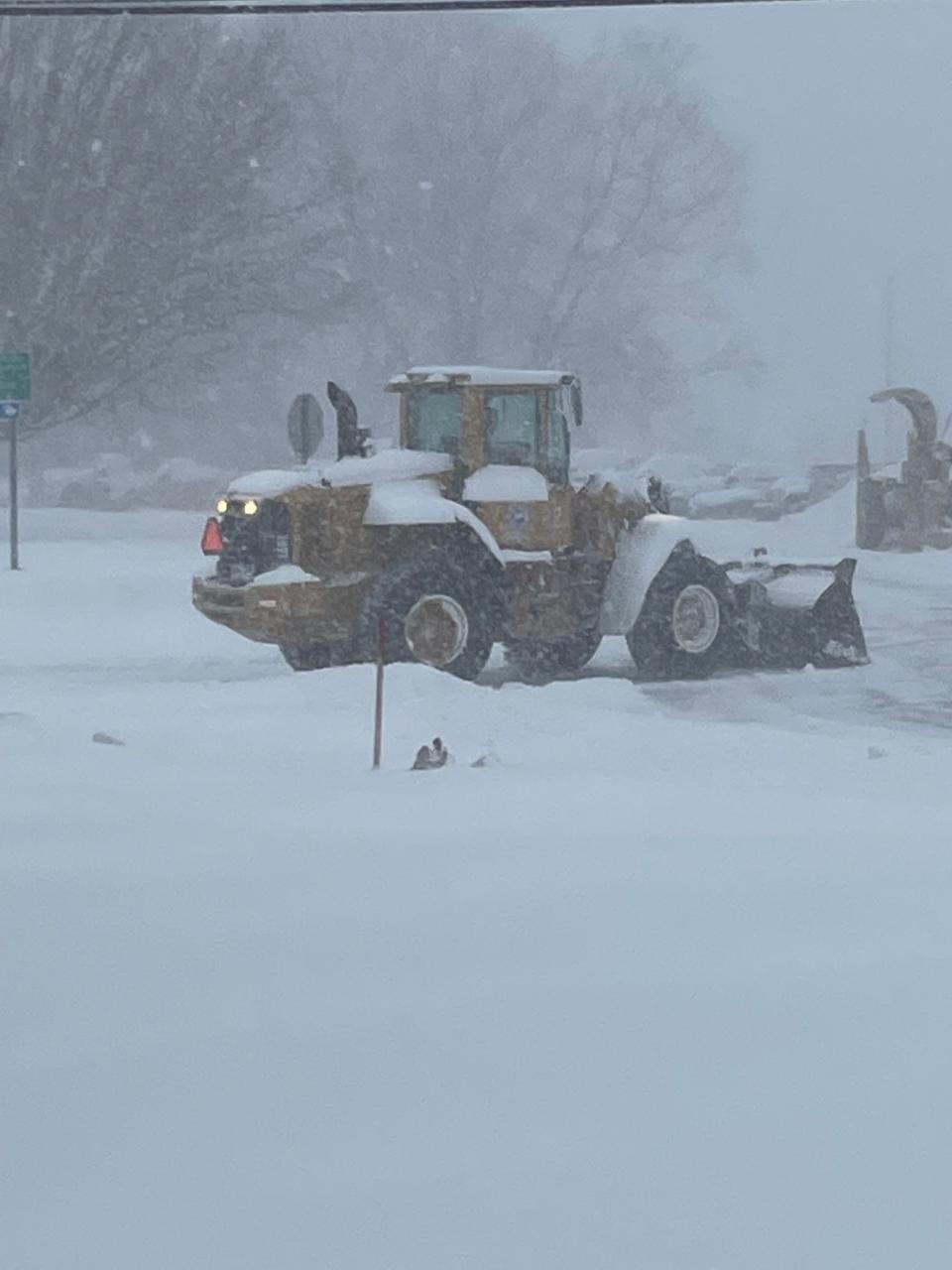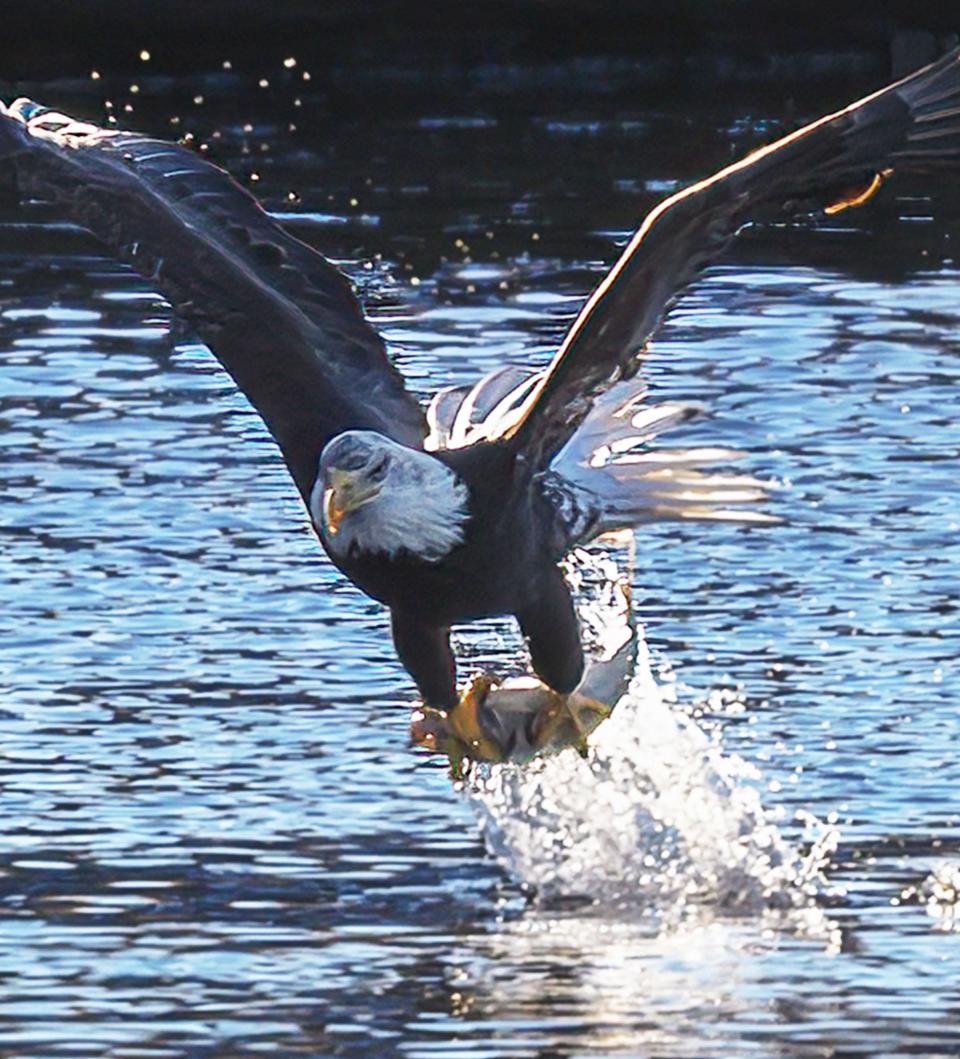Help The Last Green Valley count bald eagles in January
“The solstice past, the year tends toward Spring. But you would never know it. The old saying, ‘days lengthen, cold strengthens,’ is proved in January,” writes Hal Borland in “Beyond Your Doorstep: A Handbook to the Country.”
The solstice Dec. 21 was soon followed by old man winter appearing with high winds, rain for us, snow for others to the west and north, and a bone-chilling clarity that only winter can bring.
Christmas Eve across much of the country was in the grips of a “bomb cyclone” weather system that spawned high winds and blizzard conditions, leaving 1.7 million folks without electrical power and cancelling travel plans for many families. We also lost power for about six hours, but our generator was already hooked up and ready. At first light on Christmas Day 2022 the thermometer at our house lingered at 8 degrees and barely reached into the 20s by mid-day.

What will the weather bring this first month of the new year? If the past few years are any indication, the low temperatures of December 2022 will likely be followed by a January of variable temperatures. At this writing, the forecast for the first day of the year is for a chance of rain with temperatures between a high of 60 and low of 40. Living in New England, we come to expect significant swings in temperatures. Here’s what I’ll be looking for this month.
Eagle month in Connecticut
“Ferocious animals have been used as visual metaphors in various cultures, but eagles were pre-eminent in terms of their size, visual acuity, effortless flight, and above all, the killing power of their massive feet and talons,” writes Tim Birkhead in “Birds and Us: A 12,000-Year History from Cave Art to Conservation.”
Our region is rich in water resources, and bald eagles, our national symbol, have returned in increasing numbers to take up residence near our rivers, lakes and ponds. Fish are their primary diet, and they have evolved as extremely proficient at catching fish “on the fly” with their long and very sharp talons.
Eagles, like other large raptors, have a life strategy of long and slow, with low reproductive output coupled with extended parental care and long life. Typically, they raise only one or two chicks per year and occasionally a pair will have three chicks in a nesting season.

Courtship, nest building and repair starts this month with eggs laid mid-February to mid-March. Hatching occurs mid-March to mid-April, then rearing during the spring with fledging mid-June to mid-July. It takes a lot of food to raise a bald eagle from a hatchling that would fit in the palm of your hand in its first days to a full-size eagle, 3 feet tall with a 6-foot wingspan by the time it fledges.
During the cold of winter, bald eagles residing in northern states venture south from their frozen waterways in search of open waters for hunting. This concentration of eagles provides the opportunity for biologists to survey and monitor the status of bald eagle wintering populations. In early January, across the country several hundred individuals count eagles along standard non-overlapping survey routes. This work is important to document the number of eagles throughout the country, an effort that resulted in the removal of the bald eagle from the Endangered Species List in 2007.
In Connecticut, the survey is held the first full weekend in January and is managed by the CT Department of Energy and Environmental Protection Wildlife Division (CT DEEP). Wildlife Biologist Brian Hess coordinates surveyors across the state, providing data forms, specific protocols and instruction. The process includes teams in the field on the same day surveying a specific 4-hour period from 7 a.m. to 11 a.m. This effort provides a quick 4-hour census of eagles, with little overlap and repeat counting, allowing biologists to get an accurate estimate of the population.
Got mice? Your pest control measures might kill birds of prey in your neighborhood, too.
Crucial to the success of the program is experienced surveyors who can identify bald eagles and differentiate between juveniles and adults in their different plumage stages and are familiar with the survey location. It takes five years for a bald eagle to get its brilliant white head and tail, yellow feet and yellow/gold eyes.
In the field, and at a distance (with binoculars), an experienced surveyor can quickly identify a roosting juvenile eagle among other large raptors such as red-tailed hawk or distinguish a soaring bald eagle from a soaring turkey vulture.
Since 2010, TLGV has assisted in the program by organizing teams of volunteers within the 26 Connecticut towns that are part of the National Heritage Corridor. We place volunteers along the mainstem rivers as well as several lakes and ponds where eagles have been seen and known to congregate. Last year, TLGV’s 28 volunteers surveyed 38 locations (26 river and 12 flatwater) and counted a total of 32 bald eagles (21 adults and 11 juveniles). Our efforts help CT DEEP track the growing population of eagles in the state.
Coyote or dog? Identifying tracks in the snow. Plus, tips on planting winterberry.
TLGV also helps to monitor bald eagle nests within The Last Green Valley’s 35 towns (26 in Connecticut and 9 in Massachusetts). Last year, we reported 18 chicks that hatched and fledged from 13 nests. Across Connecticut, the number of eagles increased from one active nest in 1994 to 23 by 2010 and at least 79 in 2021. In that time, more than 830 bald eagle chicks have hatched with 105 reported in 2021, up from 88 in 2020. It is abundantly obvious our region has exceptional bald eagle habitat with plentiful clean water. Their increase in population regionally and nationally is a wonderful success story.
Here at TLGV, we are happy to share information about bald eagles. In fact, we call January “Eagle Month” with programs and activities including eagle walks, talks and program for families and children. For more information, check out the TLGV website link at: https://thelastgreenvalley.org/tlgv-events/
Bird feeder time of year
I held off until the deep cold of late December to clean and fill the bird feeder with seed and hang suet cages for our local backyard bird residents. There is plenty of what nature provides on our land to keep the birds in food stuff most of the year. Our trees, fields and gardens have a smorgasbord of tasty insects during the warm months, and from fall to early winter plenty of wild plant seeds and berries, along with insect eggs and larvae to keep them satisfied.
Our landscaping and garden decisions are based on benefits to wildlife as well as our own interest in beautiful flowers and tasty veggies. Fall is also when black bears are ravenously in search of food to put on enough fat to see them through winter hibernation. The protein-packed bird seed is too tempting, and I don’t need a 400-pound bruin, Ursus americanus poking about the property.
Do woolly bear caterpillars predict winter weather?
At this writing the temperature outside is a balmy 18 degrees Fahrenheit, bringing a seemingly constant visitation to our feeder. Black-capped chickadees, tufted titmice, white breasted nuthatches, woodpeckers (downy, hairy, and red-breasted), finches (gold, purple, and house), cardinals and the noisy, messy blue jays take their turns at the dinner table. Underneath the feeder, several mourning doves and dark eyed juncos benefit from the drops, and when filling the feeder, I make sure to scatter a handful for these ground feeders. The squirrels enjoy the scraps, too. Thankfully, there is no sign of their much larger mammalian cousin Ursus.
January is here. I hope you’ll join me to get outside and enjoy the winter season. For those who dread the cold, don’t despair, the solstice has passed, and we’ve begun the slow turn towards longer days with the Vernal Equinox, a short three months hence.
Tiny predators: Did you know fisher cats are related to river otters and eat porcupines?
A note to Bill Reid readers
We seem to be getting busier by the day here at TLGV and have requested this column be published once a month, on the first Sunday of the month after today. The Bulletin has kindly agreed to our request. If you are missing the regular tidbits about the Last Green Valley National Heritage Corridor I try to provide in this column, please consider signing up for our newsletter, which also features information from myself and other rangers about the heritage corridor and what we are up to at TLGV.
Stay tuned for my next Bulletin column on Feb. 5 and thank you to the many Bulletin staff who have massaged my weekly musings into better columns for the last 14 years. You can find all my previous columns on the TLGV website at: https://thelastgreenvalley.org/category/read-reid/
Bill Reid is the chief ranger of The Last Green Valley National Heritage Corridor. He can be reached at bill@tlgv.org or 860-774-3300.
This article originally appeared on The Bulletin: Opinion: Help Bill Reid count bald eagles in CT; fill bird feeders

